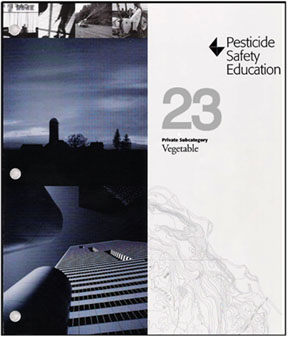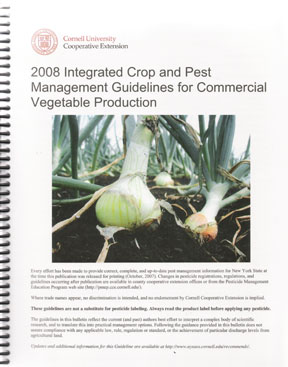Search PMEP
Course Calendar
Cornell Pest Management Guidelines
Home-Remedies and Minimum-Risk Pesticide Recommendations
Regarding home-remedies and Minimum-Risk pesticides, this is what has been developed for the use/recommendation of these materials in Bulletin # 74, Pest Management Around the Home:
Home Remedies
Although gardeners claim that certain herbs, onions, garlic, and other plants will repel insects, evidence for such claims is scarce. There are numerous, commonly available products, such as vegetable cooking oils, soap, and baking soda that have pesticidal properties, as do concoctions made from plant extracts (i.e., mint, citrus peel, and marigolds). State and federal regulatory agencies prohibit their use on a commercial basis (even though they are environmentally safe and inexpensive). To comply with these regulations, we are obliged to refrain from recommending them in most cases; we do list a few home remedies in Bulletin #74, Pest Management Around the Home, but these remedies are not endorsements by Cornell University of any product or procedure, nor are they recommendations for use either expressed or implied. Neither Cornell University nor its employees or agents is responsible for any injury or damage to person or property arising from the use of this information.
Minimum-Risk Pesticides
Currently the NYSDEC does not require state registration of minimum-risk pesticides, but some states do. There is no problem recommending the use of minimum-risk pesticides in our "Cornell Guidelines" if you feel they are appropriate and effective; however, the following criteria must be met:
The EPA has identified some pesticides as minimum-risk pesticides, and these products are exempted from the requirements of FIFRA (the Federal Insecticide, Fungicide, and Rodenticide Act). Other criteria must be met before a product is considered minimum risk. The inert ingredients in any such product must be on the list in the most current List 4A published in the Federal Register, which is updated periodically. For a copy of the list, write to Registration Support Branch (4A Inerts List), Registration Division (7505C), Office of Pesticide Programs, Environmental Protection Agency, 401 M St., SW, Washington, DC 20460. All of the following conditions must be met for products to be exempted under this section:
Each product containing the substance must bear a label identifying the name and percentage (by weight) of each active ingredient and the name of each inert ingredient.
The product must not bear claims either to control or mitigate microorganisms that pose a threat to human health, including but not limited to disease-transmitting bacteria or viruses, or claims to control insects or rodents, carrying specific diseases, including, but not limited to, ticks that carry Lyme disease.
The product must not include any false or misleading labeling statements.
Products containing the following active ingredients are exempt from the requirements of FIFRA, alone or in combination with other substances listed in this paragraph, provided that all of the above criteria are met.
Castor oil (U.S.P. or equivalent)
Cedar oil
Cinnamon and cinnamon oil
Citric acid
Citronella and citronella oil
Cloves and clove oil
Corn gluten meal
Corn oil
Cottonseed oil
Dried blood
Eugenol
Garlic and garlic oil
Geraniol
Geranium oil
Lauryl sulfate
Lemongrass oil
Linseed oil
Malic acid
Mint and mint oil
Peppermint and peppermint oil
2-Phenethyl propionate (2-phenylethyl propionate)
Potassium sorbate
Putrescent whole egg solids
Rosemary and rosemary oil
Sesame (includes ground sesame plant) and sesame oil
Sodium chloride (common salt)
Sodium lauryl sulfate
Soybean oil
Thyme and thyme oil
White pepper
Zinc metal strips (consisting solely of zinc metal and impurities)
W. Smith, PMEP
Cornell University is committed to making our websites accessible to everyone, including individuals with disabilities. To report a problem or to request an accommodation to access online materials, information, resources and/or services, please contact web-accessibility@cornell.edu. In your message, include the website address or URL and the specific problems you have encountered. You will receive a reply as soon as possible.





